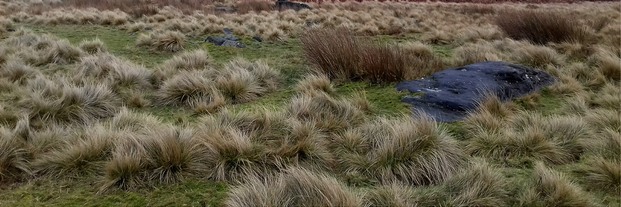

Biodiversity
Action
Plan
Acid Grassland: Key objectives
- Raise awareness of the importance of Acid Grassland for biodiversity
- Review the extent and condition of semi-natural Acid Grassland in Barnsley.
- Promote good management practice for semi-natural Acid Grassland and seek to maintain its extent.
- Seek the creation of new, and extension of existing, semi-natural Acid Grassland.
- Seek to create links and corridors between semi-natural Acid Grassland and other habitats
- Collect and analyse records of populations and assemblages of wildlife species in semi-natural Acid Grasslands across Barnsley
- Ensure that all suitable semi-natural acid grassland sites are identified as Local Wildlife Sites or SSSIs.
Roles
Landowners and managers:
- Maintain and enhance acid grassland habitat through positive conservation management.
- Take up opportunities to restore acid grassland habitat where this does not damage other priority habitats.
A number of organisations including land fill bodies may offer grants for acid grassland management, enhancement and restoration. It is also part of environmental land management schemes
Natural England:
- Administers environmental land management schemes for maintaining and enhancing acid grassland priority habitat
- Where it is intended to change the use of unimproved grassland this should be subject to a change of use application to Natural England.
Barnsley council as a planning authority:
- ensures in planning decision that the biodiversity value of grasslands are maintained and enhanced.
- sets conditions to protect priority grassland and require EIAs where appropriate.
Voluntary groups and volunteers
- help with meadow creation, extension and management where appropriate.
- provide information about the condition of grasslands and wildlife recorded there
Marking Progress
- No reduction in extent of unimproved or semi-improved grassland
- Grassland restored or created to meet priority habitat criteria.
- Grassland in conservation management / favourable condition.

What has been done?
- Some species-rich meadows have been restored or maintained by private individuals, farmers, charities and local community groups.
- Friends of the Earth Penistone have created a number of meadows.
- Transpennine Trail conservation volunteers with Barnsley council rangers have been active in creating and managing wild flower grassland areas along the TPT.
Proposed actions
- Project to identify Acid Grassland sites and maintain inventories of
- unimproved and semi-improved sites
- sites of high value and interest
- sites with potential to be restored to priority status
- Conduct assessment of condition of identified sites.
Continued
- Carry out prioritised programme of conservation and restoration through work with farmers and land owners
- Agree and carry out prioritised grassland LWS designation 2022-
- Additional grassland LWS in positive conservation management by 2030

Acid Grassland Actions